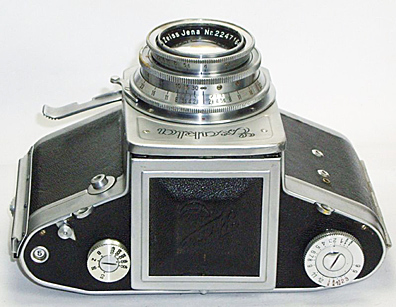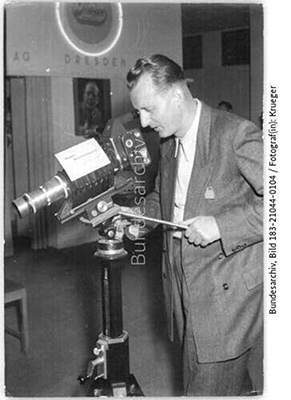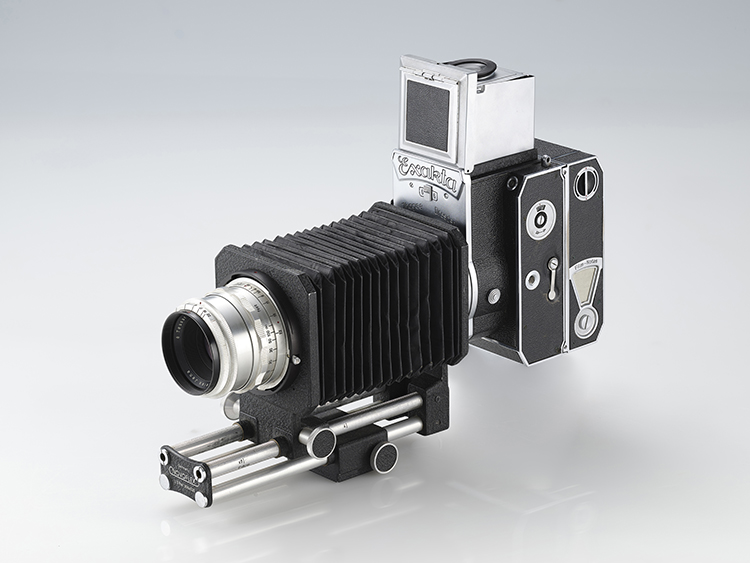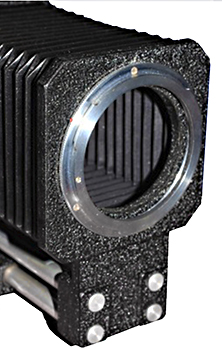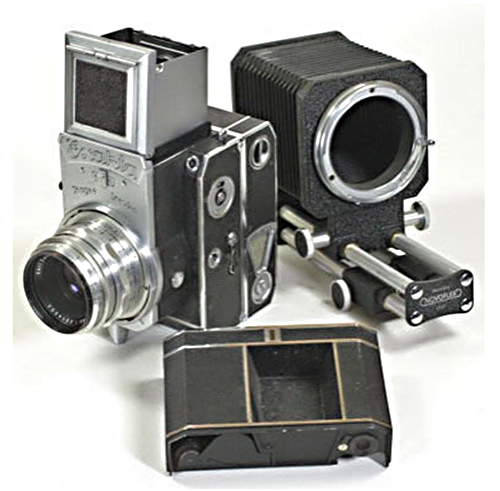by TRA
The History of the Pentacon Six
Similar cameras from other manufacturers, based on the Pentacon Six
The principal camera that was directly based on the Pentacon Six – to the extent of using the same chassis! – was the Exakta 66 that was made between 1984 and 2000. However, there had previously been cameras called “Exakta 66”, so we shall deal with them briefly first, to avoid any confusion, even though they are not based on the same design.
Older “Exakta 66” cameras
Note that the Exakta 66 of 1984-2000 is
in no way related to three other cameras with the name
“Exakta 66” that were available earlier in the 20th
century. We will therefore here give a brief
summary of the earlier cameras that bore the name
“Exakta 66”.
| Exakta 6×6: 1939
|
Strictly-speaking, this camera
was never called “Exakta 66”; it was an
Exakta camera for the 6×6 format and so is
sometimes referred to as the “Exakta 6×6”
(pronounced “six by six” in English, or “sechs
mal sechs” in German), although this name did
not appear on the camera, which simply bore the
name “Exakta”. In German it is sometimes
called the “Exakta 6×6 quer”. (In this
context, “quer” is best translated
“horizontal”.)
This camera had a trapezoid shape like the other Exakta SLR cameras that had come onto the market between 1936 and 1939. (Hummel p. 77) Approximately 1,500 cameras were produced between August and November 1939 These cameras proved unreliable, and many were returned to retailers between 1939 and 1945 for repairs under warranty, according to Hummel (p. 134). As was typical with Exakta cameras in the 1930s, the Exakta 6×6 has a wide range of speeds. Speeds from 1/25 to 1/1000 plus B and Time are set on the left-hand knob, and a range of slow speeds extending all the way to 12 seconds is available via the right-hand knob. |
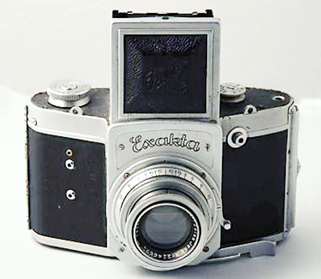 |
| Exakta
6×6: 1951
According to Hummel, this was
only slightly changed from the 1939 model, the
main difference being that the waist level
finder could be removed, as a prism was
planned. Assembly began with remaining
parts from the 1939 model plus some
newly-manufactured parts. However, the
film transport problems of the 1939 model had
not been overcome, and the camera never
entered serial production. Hummel
reports that only about 350 cameras were built
in 1951. Illustration to the right from
Hummel, page 134. It is also reproduced
(probably from the same source) in “EXAKTA
Collection” by Aguila and Rouah. |
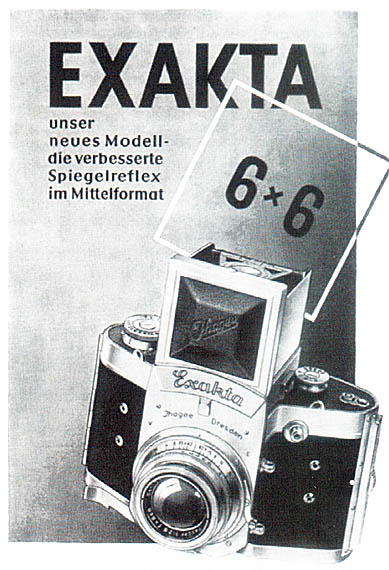 |
| 1953-1954 Exakta 66
This camera was first shown at the Leipzig Spring Fair in 1953. It was of a totally different design from the previous Exakta 66 cameras, having a vertical shape and a removable film magazine. In German it is sometimes called the “Exakta 6×6 hoch”. (In this context, “hoch” is best rendered in English by the word “vertical”, even though that is not the normal translation of the word.) After production delays, little more than 100 cameras were produced in 1953. (See Hummel p 116, p.136) The design does perhaps strike the modern eye as unusual, but in fact the shape seems to have been consciously inspired by that of the popular Twin Lens Reflexes of the day, especially the Rolleiflex, but with the advantages of being a Single Lens Reflex: no parallax problems (mis-match between the image in the viewfinder and the image recorded on film), availability of inter-changeable lenses, as well as bellows and tubes for close-up work, etc. In use, it sits extremely comfortably in the hand (like the Rolleiflex!), and it is capable of delivering images of superb quality. |
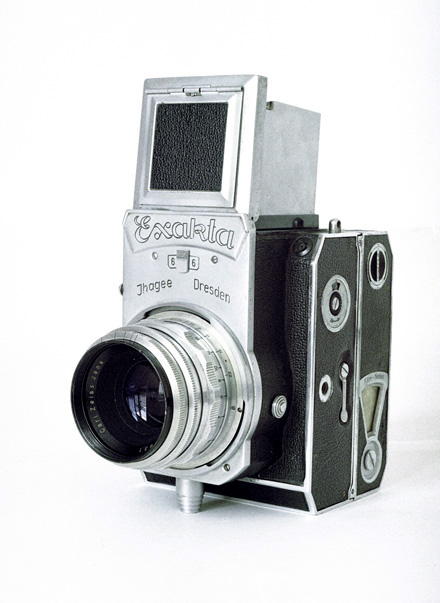
|
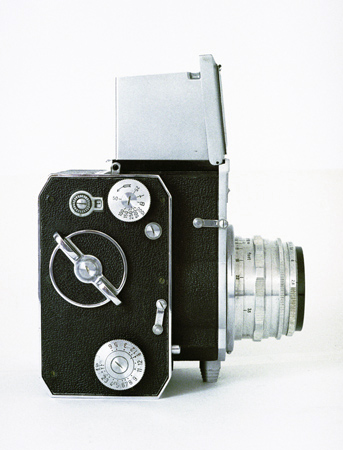 Here, again, are the two shutter speed dials – but also an unusual winding key in the shape of a wing-nut, rather inspired by some movie cameras, I think. A half-turn suffices to advance the film, cock the shutter and re-position the mirrors. [C447_11A.jpg] |
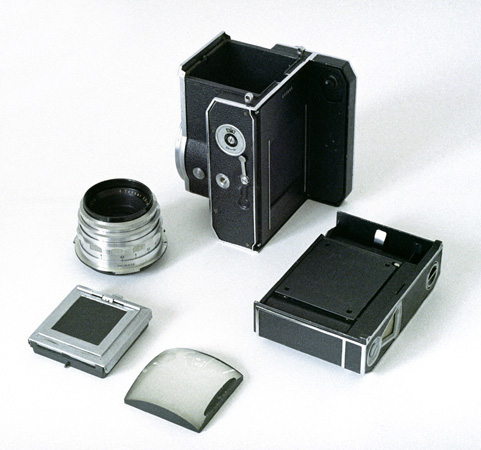 More unusual design features. The camera is modular, with removable lens, back, finder and focussing screen – although it is not possible to remove the back part-way through a film! In theory, a prism could have been fitted to the camera, although one was never produced for it. [C447_13A.jpg] |
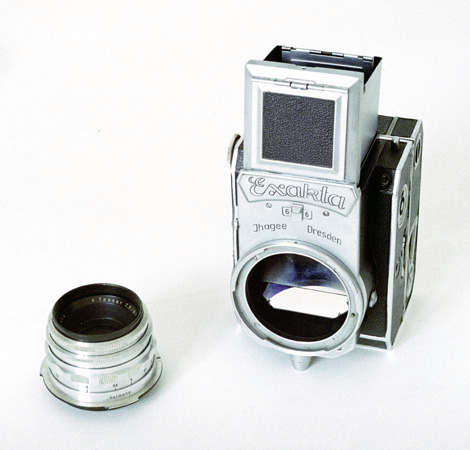 Another surprise feature! The mirror is in two parts and the bottom section folds down when the shutter is fired. This allowed for a full-sized mirror that did not cause vignetting in the viewfinder even with long lenses – and made sure that the extra-large mirror didn’t hit the back of the lens! This feature was copied by some Japanese manufacturers. What a pity that it was not incorporated into the Praktisix/Pentacon Six. [C447_14A.jpg] |
| A serial production of 10,000
cameras was planned for 1954, but in fact only
about 2,250 left the factory, according to Hummel
(p.136). Some users loved the camera and
produced excellent pictures with it, sometimes
with some of the telephoto lenses that were
available for it. However, problems with the
camera and in the factory led to the project being
abandoned in 1955. (Hummel, p. 137) Right: A picture of Sam Sherman taken in 1974
with the 1954 Exakta 66 SLR, which gave him good
service. |
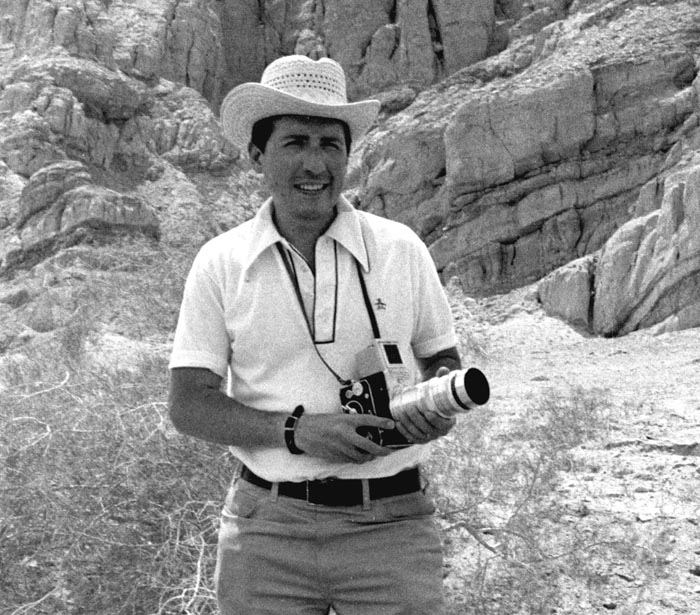
|
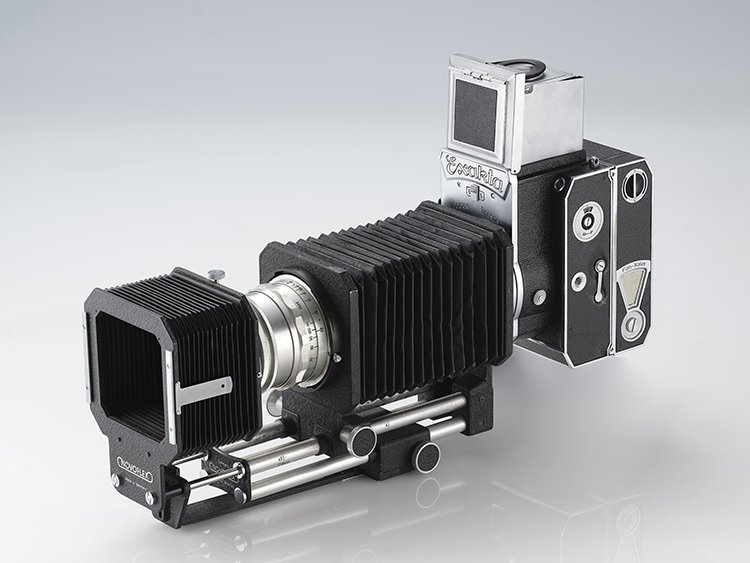 Novoflex SIXBIG bellows unit on Exakta 66 vertical, with the BIGSON bellows lens hood mounted [e66_vert_bel_02s.jpg] |
|
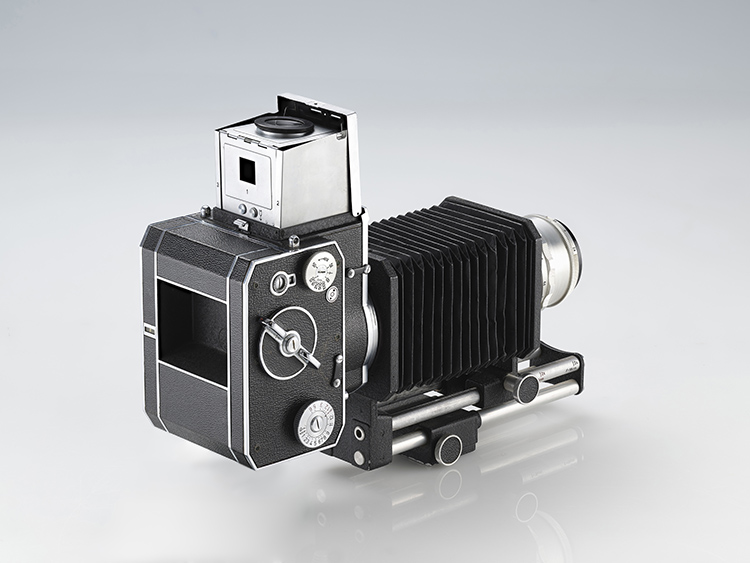 Exakta 66 vertical with Novoflex SIXBIG bellows unit, side/rear view [e66_vert_bel_03s.jpg] |
| Novoflex SIXBIG bellows,
version I |
||
| As Martin Grahl
explains above, the second version of the SIXBIG
bellows had hollow rods in order to accept the BIGSON bellows lens hood, while the
first version, which can be seen in these two
photographs, had solid rods. Clicking on each of the images opens a larger copy of it, although not in very high resolution with these two pictures.
|
SIXBIG First
version, with solid rods, shown with an Exakta
66 vertical of 1953-54
[SIXBIG_solid_rods_01s.jpg] |
To go to the Bibliography, click here.
To go on to the next section, click
below.
26 The Exakta 66
(1980s on)
To go to the beginning of the history section, click here.
To go to introduction to the cameras, click here.
To choose other options, click below.
Home
© TRA June 2010 Latest revision: March 2023
